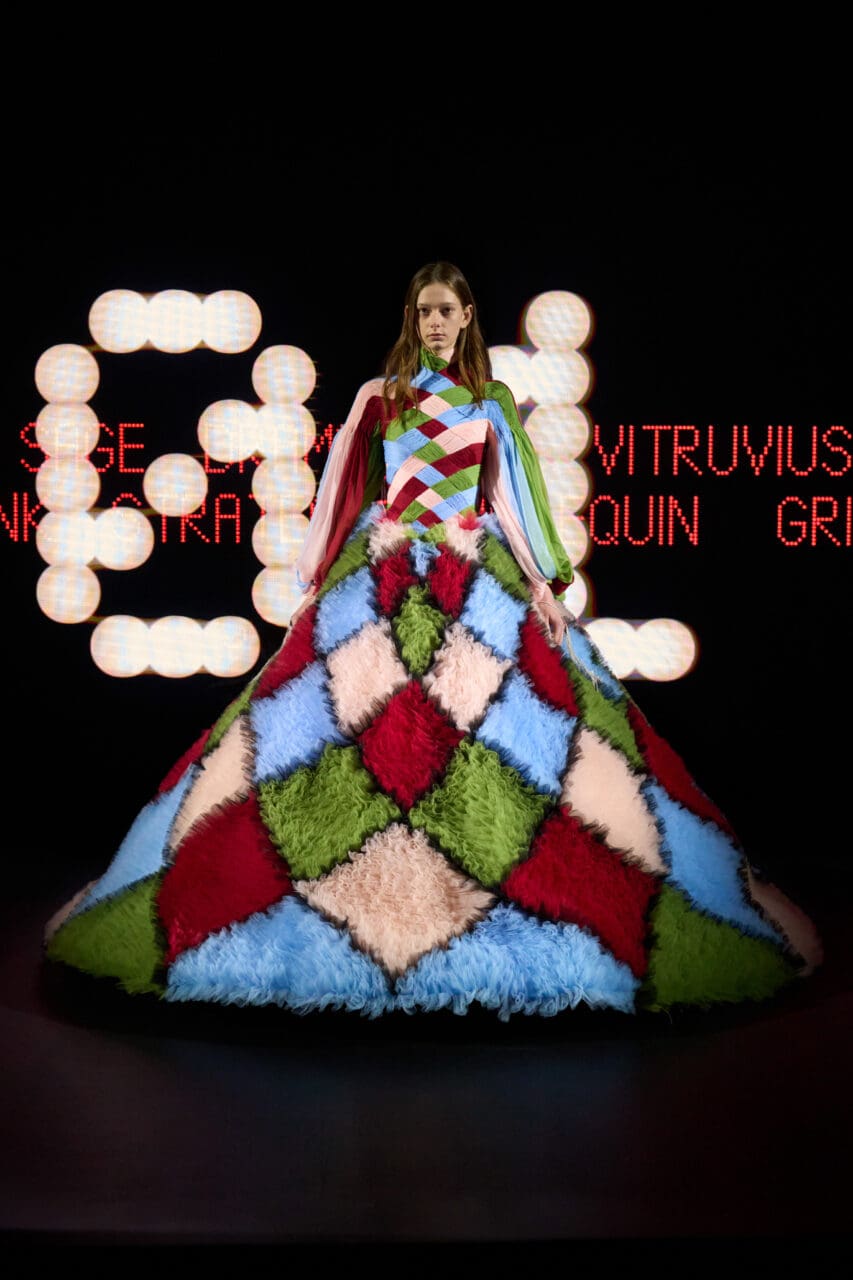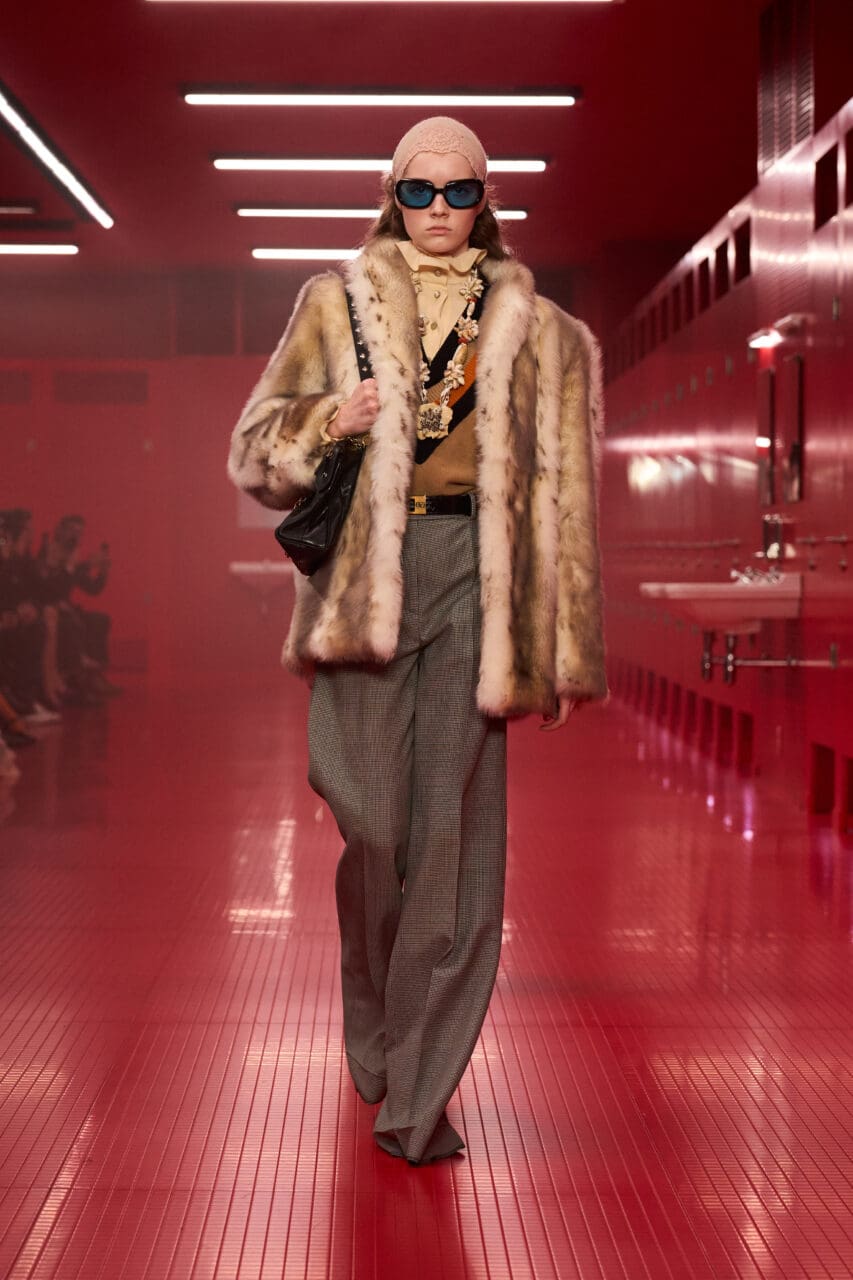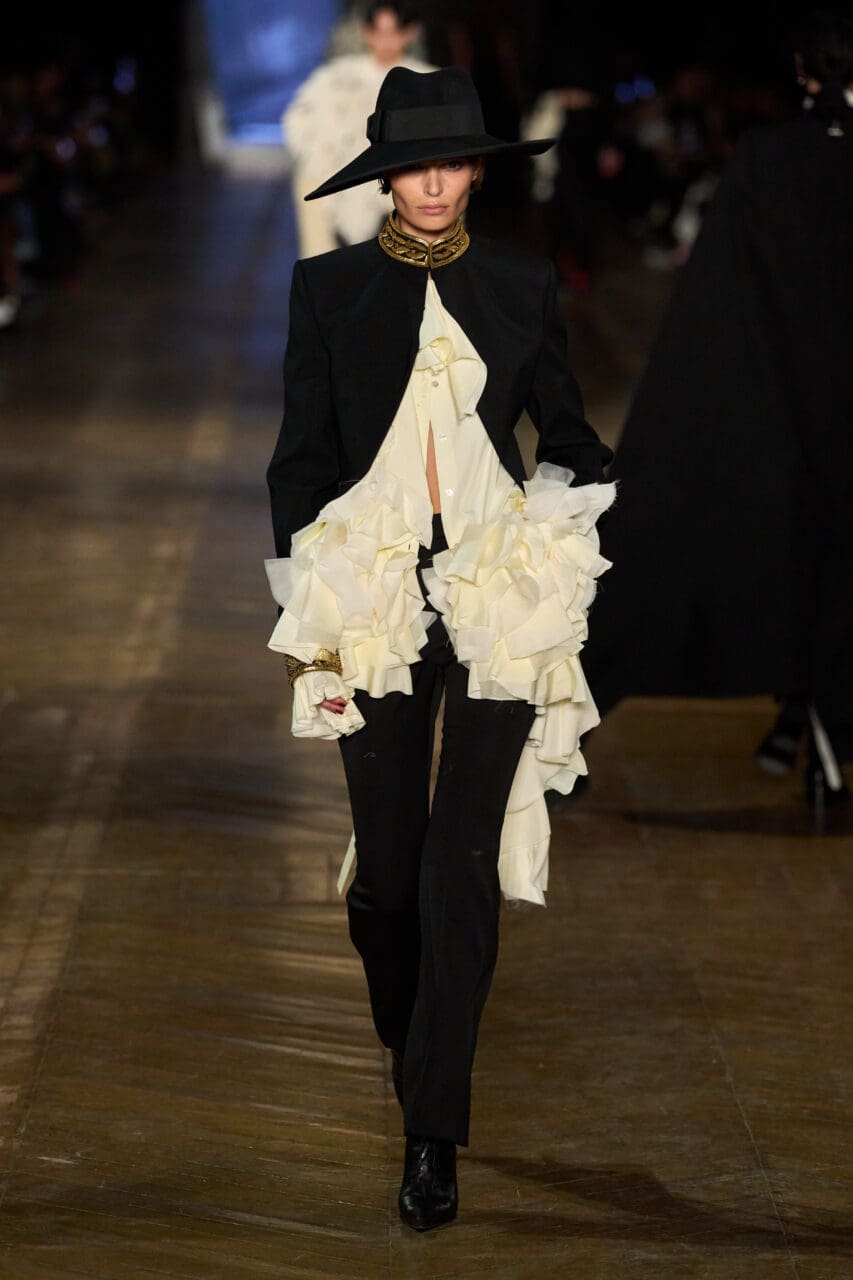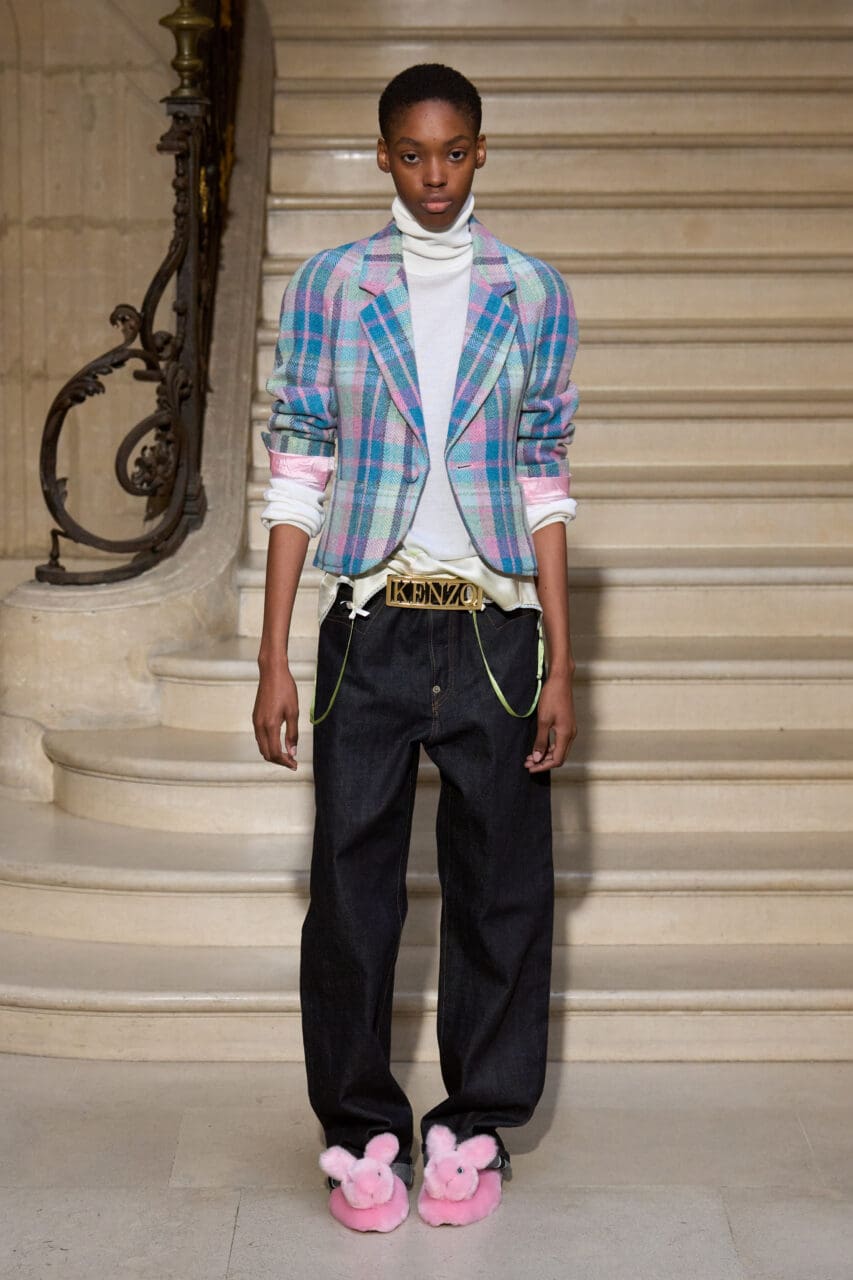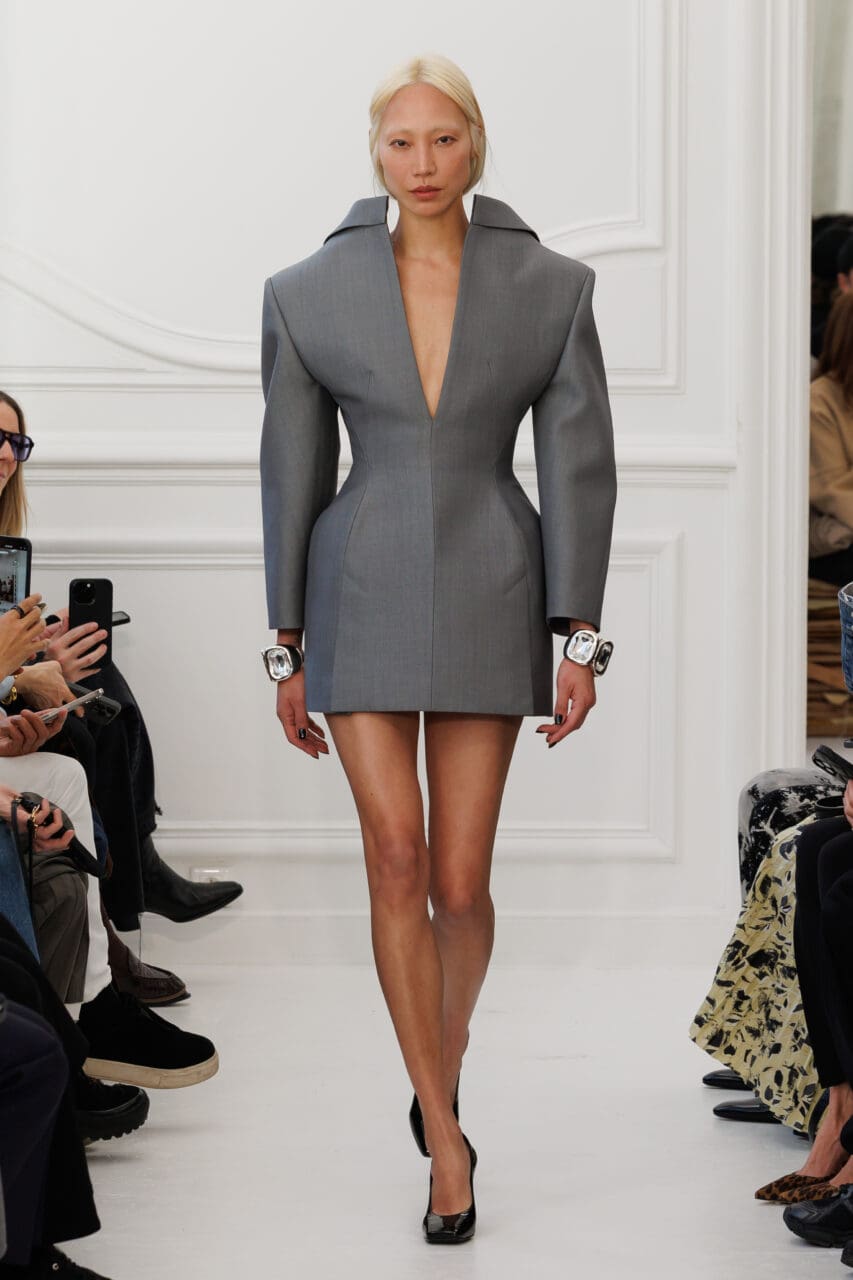“I’m still trembling,” gasped a fashion editor as we rushed for the door. We’d just witnessed Alessandro Michele’s 48 models running across a darkened stage in strobe lights; their crinolines and capes and flying hair—every gesture caught as if in slow-motion. His debut for Valentino haute couture had felt more like being involved in a cinematic psychodrama—swept along in one man’s stream of fevered imaginings—than any other fashion show I can compare it with.
“I’ve been in the middle of a tornado,” he’d said earlier in the calm of the Valentino couture salon in the Place Vendôme. “I went through many obsessions, an unbelievable list of things. I tried, first of all, to go back to my personal obsessions as a Roman person. Looking at the Valentino archives, and my passion about historical costume—the dream, the metaphysical idea of fashion.”
Delving into the past has been a distinguishing feature of all the couture collections this week, but no one has dived in deeper than Michele. A “river”—as he put it—of the inspirations behind each complicated hand-made outfit ran in digital red type projected onto the back of the set. Each had a head-spinning set of literary, art history, and old Hollywood references behind them: Venetian carnivals, medieval nuns and Marie Antoinette, Georgian panniers and Victorian crinolines, silent movie stars and cardinals, the names of poets and theorists, and much more.
And of course Michele’s main creative concern was the Valentino archive—and the living couture ateliers at the house in Rome. What he draws from the archive is Valentino Garavani’s culture of “beauty, elegance and opulence. It is not a brand, it’s a house.” The head-spinning sensation of having the phenomenal skills of the house at his fingertips caused the sense of “Vertigineux,” which he named the collection. “It’s hard to see your way through because you have the freedom to do anything. To them, everything must be not just perfect, but mesmerizing. I learned a lot.”
Michele’s lists make note of the seasons many of the looks are drawn from. Familiar, inimitable Valentino techniques show up: minute pleating on trumpet sleeves (dress 19); fragile, complicated ruffles and chintzy floral prints (dress 7); the bows, the frilly blouse plackets, bejeweled lattice-work embroidery (dress 42); the precise shape of a princess coat (dress 29).
But then, Michele exploded the shapes, putting giant crinolines or 17th-century panniers under them. “I was like, if I take a dress [from] 1950 and I put the pannier, it’s like a robe manteau from Versailles!”
He also ran references to couturiers from other eras, like Adrian’s movie stars, Paul Poiret, and Charles Frederick Worth. Also, to the Catholic church. The Valentino red was used in both an insane crinoline with a bolero jacket (dress 20) and a Pope’s scarlet moire robe (dress 37). “When I was a kid, it was the most beautiful dress I saw walking in the street—really beyond—on a man. You see priests in a restaurant, the market. They eat, laugh, even smoke. I think Rome really is a surreal culture. It’s what Fellini saw.”
And this is where the Rome of Valentino meets the Rome of the designer who has taken over his house—somewhere in Cinecittà. Michele is the son of a mother who was a costume designer in the Roman movie industry—the origin story which Rebecca Mead writes about in her Vogue profile. Dress 12 in the collection is called “My Mother.” It helps to account for the fact that he is so focused on bringing to life cinematic experiences, and costuming them to fit the impossible time-traveling inhabitants of his mind. “I’m not a couturier. I don’t think of myself as a couturier,” he smiled. “I mean, I think about myself as a guy with a lot of imagination. That’s me.”
Editor
Nicole PhelpsCredit
Lead image: Alessandro Lucioni / Gorunway.com